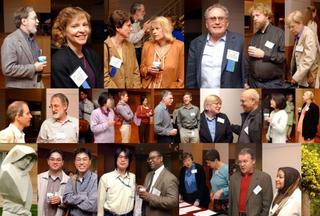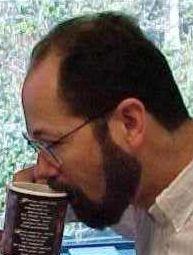2005 Spring Meeting

 "Stem Cells: Biology and Toxicological Relevance"
"Stem Cells: Biology and Toxicological Relevance"- April 12, 2005
- at NC Biotechnology Center
- RTP, NC
* Photos by Steven R. McCaw, Image Associates
The theme for GEMS Spring meeting was “Stem Cells: Biology and Toxicological Relevance”. There were 112 attendees with 39 postdoctoral candidates/students participating in the Career Lunch program. President Dr. Barbara Shane welcomed attendees and President-Elect Dr. Les Recio introduced the speakers. Dr. Brigid Hogan from Duke University gave the opening talk on “Pluripotential versus tissue-specific stem cells: historical background and future directions”. This presentation introduced the audience to embryonically derived stem cells vs. tissue-specific stem cells. This talk was followed by a presentation by Dr. Lola Reid of University of North Carolina, Chapel Hill, who spoke on “Human hepatic stem cells and the liver’s maturational lineages”. Dr. Tannistha Reya of Duke University’s presentation on “Signal integration in hematopoietic stem cell renewal” concluded the morning session.
A career lunch program was offered by GEMS. Participating students/postdoctoral candidates attended assigned tables on one of three career areas: industry, academia, government. Experts from these areas lead round table discussions on career objectives, job searching skills and hiring practices. The following people volunteered their expertise: for industry- Drs. Neal Cariello (GlaxoSmithKline) and Ray Tice (Integrated Laboratory Systems); for academia – Drs. Mark Miller (Wake Forest University) and Mary Smith (North Carolina A&T State University); for government – Drs. Errol Zeiger (NIEHS) and Larry Claxton (USEPA). Drs. Jane Allen, Gloria Jahnke, and Jayne Boyer organized and coordinated this event.
Afternoon presentations featured Dr. James Sherley from MIT speaking on “Investigating adult stem cells as targets for non-mutagenic carcinogens”. Ms. Carole Trempus from NIEHS presented her work on “Loss of CD34 expression on murine epidermal stem cells results in the abrogation of cutaneous tumor formation”. Dr. Julian Preston (USEPA) concluded the presentations with “Genotoxic effects in stem cells: Relevance to cancer risk assessment”.
The GEMS Board thanks all those who helped to make this meeting a success and welcomes ideas and suggestions for future GEMS meetings. The Board would also like to extend a special ‘thank you’ to Susan Ross and CIIT Centers for Health Research for their contribution of name badges and signs for the meeting, Integrated Laboratory Systems for providing the handouts, and grant funding provided by the NC Biotechnology Center.
Gloria D. Jahnke
GEMS Secretary







